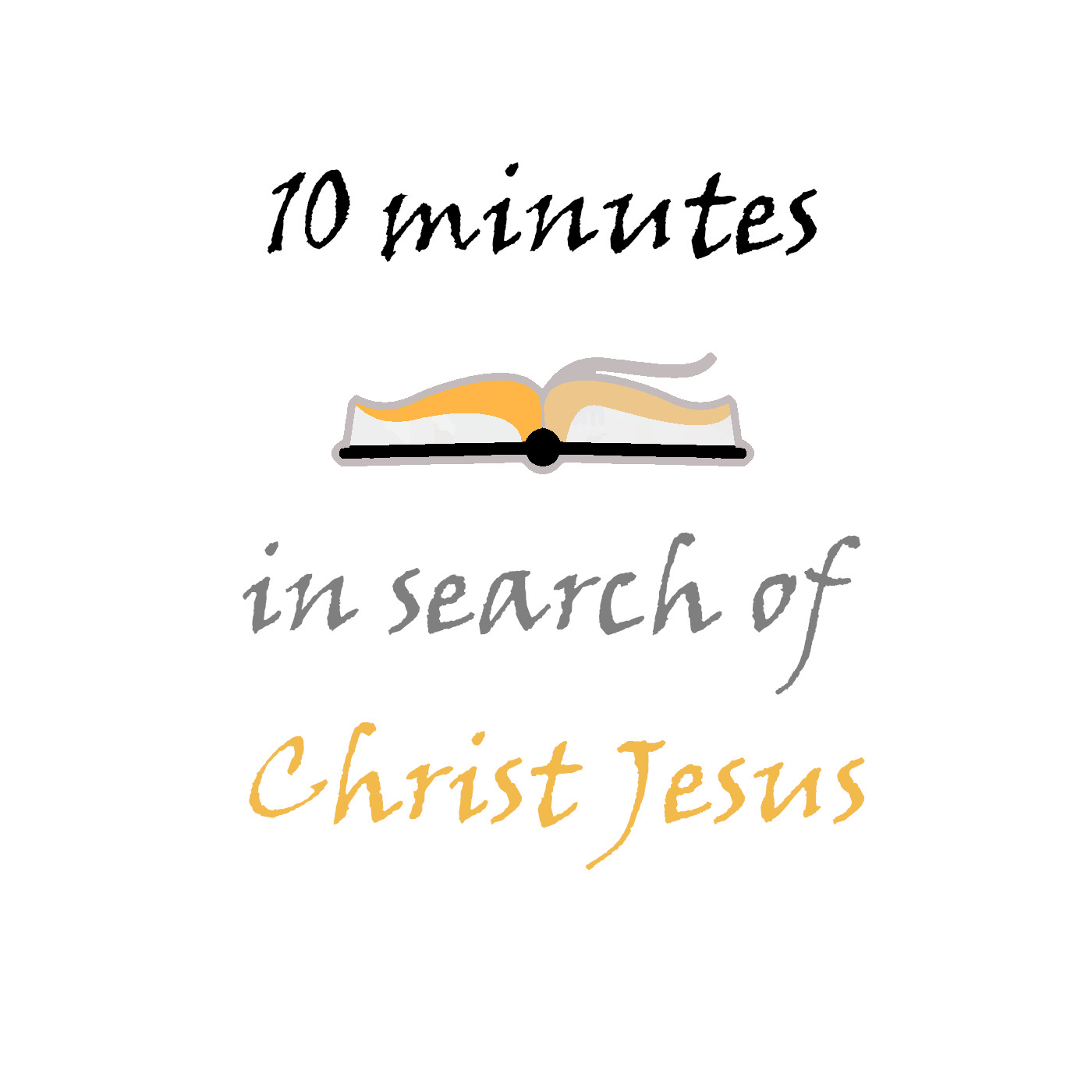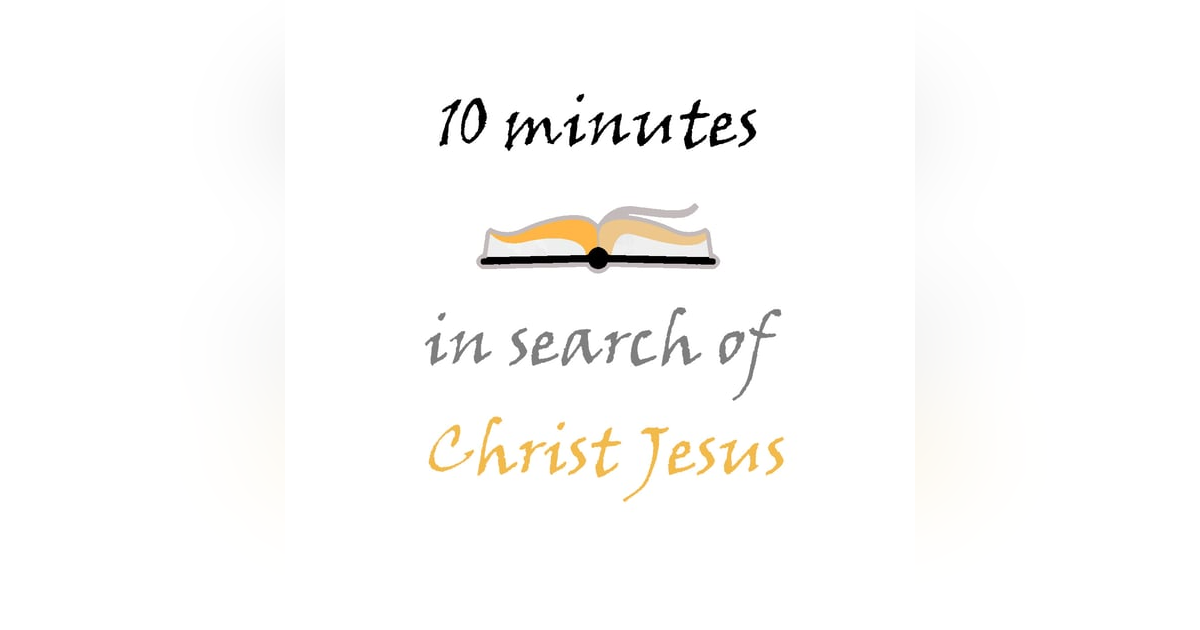

Sign up to get updates from us
By signing up, you agree to receive email from this podcast.

Friday, 20 May 2022
“Our fathers had the tabernacle of witness in the wilderness, as He appointed, instructing Moses to make it according to the pattern that he had seen, Acts 7:44
In the previous verse, Stephen completed his citation of Amos 5. ...

“Our fathers had the tabernacle of witness in the wilderness, as He appointed, instructing Moses to make it according to the pattern that he had seen, Acts 7:44
In the previous verse, Stephen completed his citation of Amos 5. In that citation (verse 7:42), he mentioned “the tabernacle of Molech.” Now, he contrasts that with the words of this verse, saying, “Our fathers had the tabernacle of witness.”
This is the edifice detailed in Exodus which was the central part of the sanctuary where the Lord dwelt. The sanctuary was enclosed by hangings forming a courtyard. Within that was kept the brazen altar and the laver. Those led to the tabernacle (also called “tent” when a different word is used) which was a tent where the Holy Place and the Most Holy Place were. It is known by various names in the books of Moses, such as the tabernacle of witness, the tabernacle of the testimony, the tabernacle of the congregation, the tabernacle of meeting, the tabernacle of the Lord, and so on.
Within the Most Holy Place was the ark of the covenant where the presence of the Lord dwelt. This was “in the wilderness.” This edifice was constructed at Sinai and was carried from there to the doorstep of Canaan where the people rebelled. When they were turned back because of their faithlessness, it was carried throughout the wilderness wanderings, and it was eventually taken across the Jordan and into Canaan. This was a temporary, mobile edifice that was constructed “as He appointed.”
The Lord gave Moses explicit and detailed instructions concerning exactly what materials to use, what colors the fabrics were to be, how much certain implements would weigh, how long things would be, and so on. Everything was according to His word and was presented to Moses. The Lord was “instructing Moses to make it according to the pattern that he had seen.”
This was first said to Moses in Exodus –
“And let them make Me a sanctuary, that I may dwell among them. 9 According to all that I show you, that is, the pattern of the tabernacle and the pattern of all its furnishings, just so you shall make it.” Exodus 25:8, 9
This is further explained in Hebrews where it says –
“For every high priest is appointed to offer both gifts and sacrifices. Therefore it is necessary that this One also have something to offer. 4 For if He were on earth, He would not be a priest, since there are priests who offer the gifts according to the law; 5 who serve the copy and shadow of the heavenly things, as Moses was divinely instructed when he was about to make the tabernacle. For He said, ‘See that you make all things according to the pattern shown you on the mountain.’ 6 But now He has obtained a more excellent ministry, inasmuch as He is also Mediator of a better covenant, which was established on better promises.” Hebrews 8:3-6
The author of Hebrews says that this sanctuary was a “copy and shadow of the heavenly things.” In every detail and in every respect, it anticipated the Person and work of Jesus. As such, it was only a shadow of the good things to come in Christ. As an explicit example of this, the author of Hebrews says of the veil that hangs between the holy and the most holy place pictured the flesh of Jesus –
“Therefore, brethren, having boldness to enter the Holiest by the blood of Jesus, 20 by a new and living way which He consecrated for us, through the veil, that is, His flesh.” Hebrews 10:19, 20
As this is so, and it is fully confirmed in the gospels through typology that it is, it tells us that their rejection of the law that was given to them, and which detailed those things concerning the tabernacle, was a rejection of what those things only anticipated, the coming Messiah. When He came, it was no wonder that they rejected Him. The same spirit of disobedience worked in them all along.
Life application: A proper study of the Bible takes a lifetime, and even then, we won’t know all that is contained there. But in order to rightly know what is said, one has to have a right translation. Otherwise, a misunderstanding of important concepts will come about. Therefore, it is important to weed out mistranslations, errors, and contradictions that come about through faulty translational work.
As an example of this, notice the difference between these three sets of verses from the KJV and the NKJV. To make it simple, the error is highlighted. Which version is in error and why? See if you can identify and explain it –
KJV:
According to all that I shew thee, after the pattern of the tabernacle, and the PATTERN of all the instruments thereof, even so shall ye make it. Exodus 25:9
“Who serve unto the example and shadow of heavenly things, as Moses was admonished of God when he was about to make the tabernacle: for, See, saith he, that thou make all things according to the PATTERN shewed to thee in the mount.” Hebrews 8:5
“It was therefore necessary that the PATTERNS of things in the heavens should be purified with these; but the heavenly things themselves with better sacrifices than these.” Hebrews 9:23
NKJV:
“According to all that I show you, that is, the PATTERN of the tabernacle and the pattern of all its furnishings, just so you shall make it.” Exodus 25:9
“who serve the copy and shadow of the heavenly things, as Moses was divinely instructed when he was about to make the tabernacle. For He said, ‘See that you make all things according to the PATTERN shown you on the mountain.’” Hebrews 8:5
“Therefore it was necessary that the COPIES of the things in the heavens should be purified with these, but the heavenly things themselves with better sacrifices than these.” Hebrews 9:23
Now that you have thought it through, you can see that the KJV botched up its translation of Hebrews 9:23, forming a contradiction in the text. The exact opposite of what the Bible says is what they have said. It is the earthly things are COPIES of the heavenly things, which are the pattern.
By translating this as PATTERNS, they have brought error into their translation. As such, don’t just rush through your reading of Scripture, but think about what is said. Mull it over. When such an obvious error is identified, do a thorough study. Read various translations, study the original Hebrew or Greek, if available, and find out what is correct. In this, you will not be left thinking the Bible has an error.
Instead, you can place the blame for such a botched-up job right where it belongs, meaning with the human translators of God’s infallible word. When such an error is identified, make sure to then make a margin note correcting the error. When the Bible transfers to someone else, they won’t have to go through all the pains of checking that you did.
Lord God, Your word is too precious to just rush through. Help us to carefully contemplate it and to revel in its perfection all the days of our lives. Thank You for Your wondrous word! Amen.